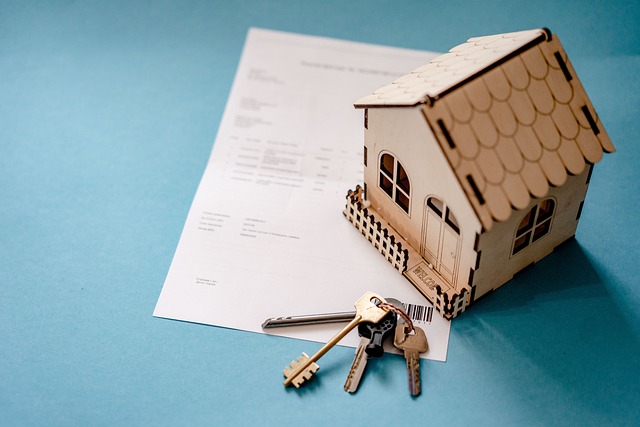Business property coverage, a core component of Business Insurance, protects against physical losses and damages to buildings, inventory, and equipment. It offers peace of mind, covers repairs/replacements, and ensures business continuity after incidents like fires or theft. Understanding perils, exclusions, and the claims process is crucial for effective risk management and selecting tailored Business Insurance policies aligned with unique business needs.
“Business Insurance is an essential cornerstone for any enterprise, offering critical protection against unforeseen events. This article guides you through the intricacies of Business Property Coverage, demystifying key concepts and providing practical insights. From understanding basic principles to navigating risks and customizing policies for unique businesses, we explore what’s covered in standard policies and how to protect your assets effectively. Learn about the claims process and be prepared for potential losses. Essential reading for any business owner seeking comprehensive risk management.”
Understanding Business Property Coverage Basics

Business property coverage, a core component of business insurance, plays a pivotal role in safeguarding commercial ventures from unforeseen perils that could threaten their physical assets. This type of coverage is designed to protect businesses from the financial burden of repairing or replacing buildings, inventory, and equipment damaged or destroyed by events such as fires, storms, theft, or vandalism.
At its essence, business property coverage offers peace of mind by ensuring that owners can rebuild and operate smoothly after a covered incident. It typically includes provisions for direct physical loss or damage to the structure and its contents. Understanding this basic framework is crucial for businesses aiming to make informed decisions about their risk management strategies, thereby safeguarding their investments and ensuring continuity in today’s competitive market.
What's Included in Standard Policies

Standard business property coverage policies typically include protection against physical damage to your building and its contents, such as equipment, inventory, and furniture. This covers perils like fire, storms, vandalism, and theft. Many policies also offer extra living expenses coverage, which can help businesses pay for temporary housing or restaurant costs if they need to evacuate their premises due to a covered event.
Additionally, these policies usually include liability coverage, protecting your business against claims of bodily injury or property damage to others. This ensures that if someone gets hurt on your property or if there’s damage to a third party’s belongings, you’re financially secured. Business insurance policies can vary in scope and specifics, but they all share the goal of safeguarding businesses from financial losses due to unforeseen events.
Protecting Your Assets: Essential Elements

Protecting your business assets is a cornerstone of any successful enterprise. Comprehensive Business Insurance plays a pivotal role in safeguarding against unforeseen events and potential financial losses. This includes coverage for your physical location, inventory, equipment, and even liability protection against legal claims. By assessing your specific needs and choosing the right insurance policy, you create a safety net that allows you to focus on growth and prosperity without the constant worry of what might be.
Elements essential in any robust Business Insurance plan include property coverage for damage or destruction, business interruption funds to cover lost revenue during recovery periods, inventory protection against theft or damage, and liability insurance to shield your company from financial harm due to accidents or lawsuits. Tailoring these elements to fit the unique risks and requirements of your business ensures you’re not just meeting minimum standards but actively mitigating potential disaster.
Navigating Perils and Exclusions

Navigating Perils and Exclusions is a critical aspect of understanding comprehensive business property coverage. Business insurance policies are designed to protect against various risks, but it’s essential to recognize that not all hazards are covered. Policyholders must carefully review their contracts to identify potential pitfalls and exclusions specific to their industry or business operations. Common perils include natural disasters like fires, floods, and storms, as well as man-made incidents such as theft, vandalism, and civil unrest.
However, certain risks may not be included in standard business insurance policies. For example, some policies might exclude coverage for environmental liabilities, business interruption due to external factors, or specific types of equipment failure. Understanding these exclusions is vital to ensure adequate protection. By being aware of potential hazards and carefully scrutinizing the policy’s terms, businesses can make informed decisions and select the most suitable coverage options tailored to their unique needs.
Customizing Coverage for Unique Businesses

Every business is unique, and so are their insurance needs. When it comes to Business Property Coverage, one-size-fits-all policies often fall short. Customizing your coverage allows you to tailor protection that aligns precisely with your specific risk profile, assets, and operational requirements.
For example, a tech startup working with sensitive data will need robust cybersecurity provisions not typically included in standard business insurance policies. Similarly, a restaurant must account for potential food safety issues, equipment failures, and even kitchen fires. By carefully evaluating these distinct factors, you can create a comprehensive policy that provides adequate protection, ensuring your business is shielded from the unique challenges it faces.
Claims Process: What to Expect After a Loss

After experiencing a loss, understanding the claims process is crucial for any business owner. The first step involves contacting your insurance provider as soon as possible to report the incident. This triggers an investigation to verify the details and assess the extent of the damage or loss. During this time, it’s beneficial to document every aspect of the event, taking photos and gathering evidence to support your claim.
The claims adjuster will guide you through the process, explaining the necessary steps and documents required. They’ll provide a claim number, which serves as a reference point for all related communications and paperwork. Once approved, your insurance company will determine the compensation based on the policy terms and the assessment of the loss. This could result in repairs, replacements, or even financial reimbursement, ensuring that your business can recover and continue operations after an unforeseen event.
